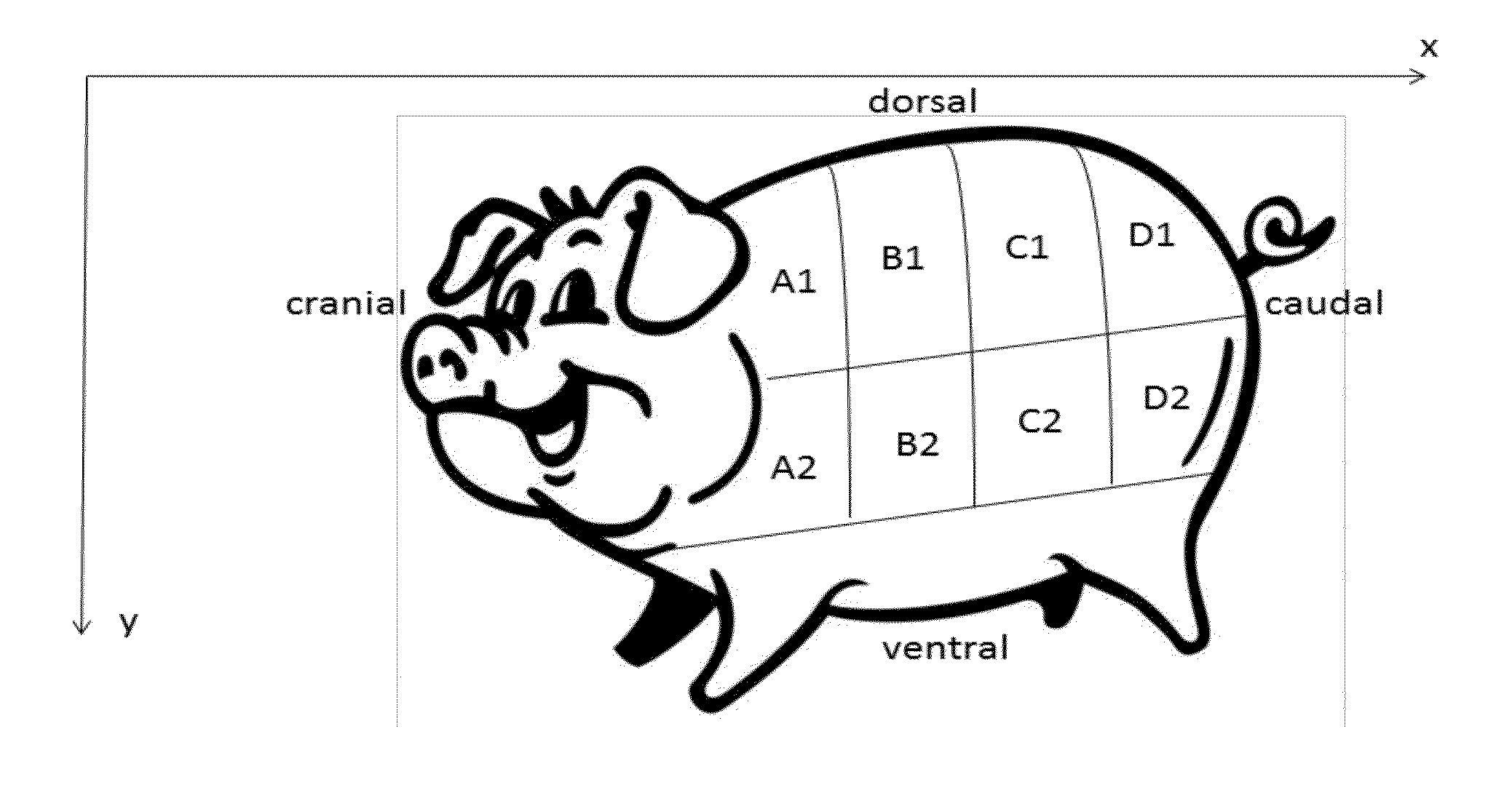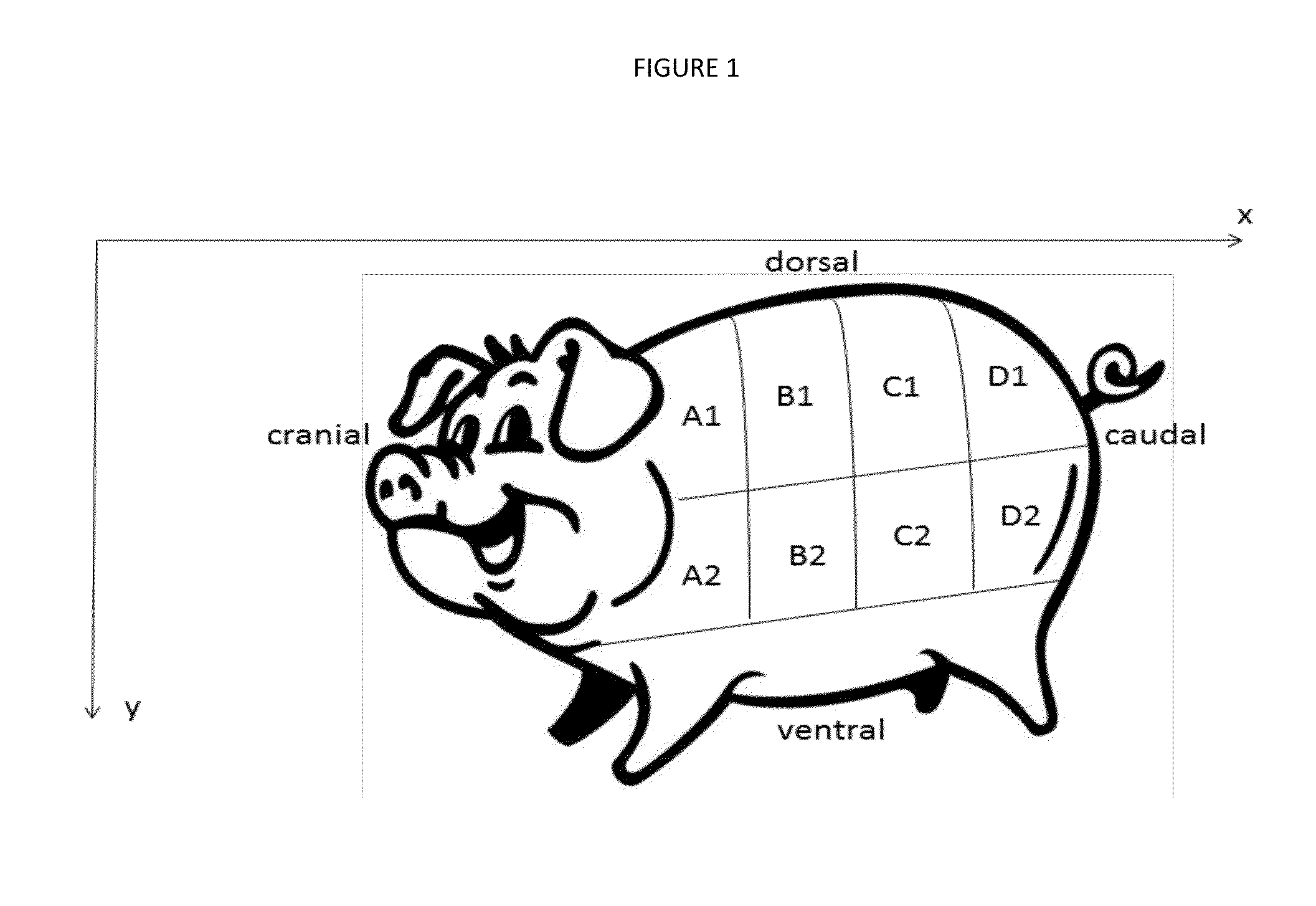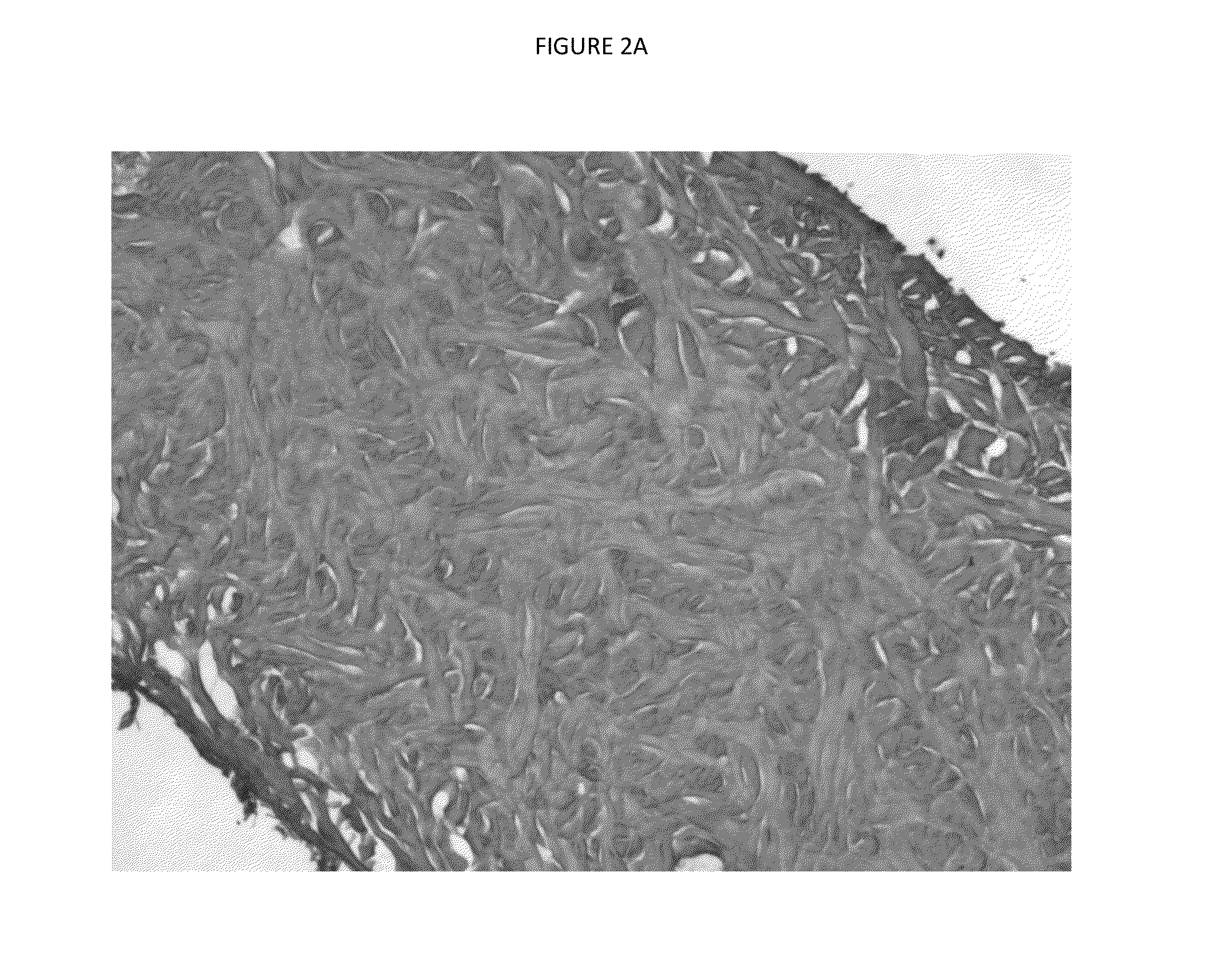Xenograft soft tissue implants and methods of making
- Summary
- Abstract
- Description
- Claims
- Application Information
AI Technical Summary
Benefits of technology
Problems solved by technology
Method used
Image
Examples
example 1
Processing Porcine Dermis
[0077]Porcine dermis samples were processed for evaluation. The process for preparing these samples involves hair removal, hypo / hyperosmotic soaks, hydrogen peroxide, solvent dehydration, and oven drying.
[0078]Specific processing of these grafts included storage in 26% NaCl, hair removal with a sodium sulfide / sodium hydroxide (H2O2) mixture, multiple hypo / hyperosmotic soaks (utilizing NaCl solutions and water), hydrogen peroxide treatment, and then solvent dehydration using acetone, and oven drying at 37° C.
[0079]Histological examination of these processed porcine dermal samples was performed, see FIG. 2. FIG. 2A shows H&E stained tissue with 50× magnification and frozen cryostat sectioning. FIG. 2B shows Alcian Blue stained tissue with 100× magnification and frozen cryostat sectioning.
[0080]Histological evaluation of the Hematoxylin and eosin (H&E) sections of the processed porcine dermal tissue showed an open porous matrix, see FIG. 2. This architecture wa...
example 2
Processing Porcine Dermis
[0081]A freshly slaughtered pig was washed in 40° C. warm water, with 0.1 to 1 wt-% sodium dodecyl sulfate (SDS), for superficial cleaning, before it was skinned. Of the entire skin, the portions of the side of the abdomen were removed and discarded, and only the skin of the back with an area of approximately 800×1200 mm processed.
[0082]Then bristles were removed mechanically from the pig skin with a blade before the skin was cut into approximately 400×600 mm sized pieces. After the skin has been introduced with the fat side up into a splitter with two driven wheels and horizontally mounted endless knives with a gap size of 2 mm to separate the excess fat and binder components including the hair roots. Subsequently, the gap dimension of the splitting machine is set to 0.5 mm, and the skin was again passed through the splitting machine to cleave the epidermis, leaving behind a dermis with a thickness of 1.5 mm.
[0083]Then the dermis was treated according to th...
example 3
Rat Model Study
[0085]Grafts made by a process of the application were studied in a rat model. A sham procedure was used as a control in this study. Sprague-Dawley rats received a unilateral defect, which was repaired with either primary closure or an implanted graft. This study evaluated in vivo cellular infiltration, neovascularization, encapsulation, hematoma / seroma formation, tissue remodeling, and biomechanics at 4- and 8-week sacrifice intervals. This study also evaluated un-implanted graft histology, biomechanics, and tissue degradation properties.
[0086]Sprague-Dawley rats were selected based on availability, limited testing expense, and the immune competency of these rats. Sprague-Dawley rats have been used in various other studies with processed soft tissues i.e., human dermis, with positive results. These studies included bilateral defect models and bilateral subcutaneous models. The linea alba defect site was used in the current study to mimic existing literature [1-5].
[00...
PUM
 Login to View More
Login to View More Abstract
Description
Claims
Application Information
 Login to View More
Login to View More - R&D
- Intellectual Property
- Life Sciences
- Materials
- Tech Scout
- Unparalleled Data Quality
- Higher Quality Content
- 60% Fewer Hallucinations
Browse by: Latest US Patents, China's latest patents, Technical Efficacy Thesaurus, Application Domain, Technology Topic, Popular Technical Reports.
© 2025 PatSnap. All rights reserved.Legal|Privacy policy|Modern Slavery Act Transparency Statement|Sitemap|About US| Contact US: help@patsnap.com



